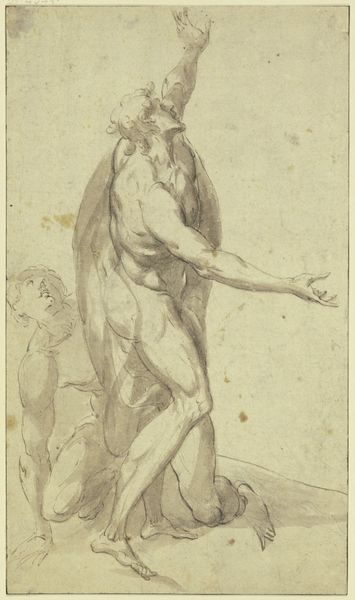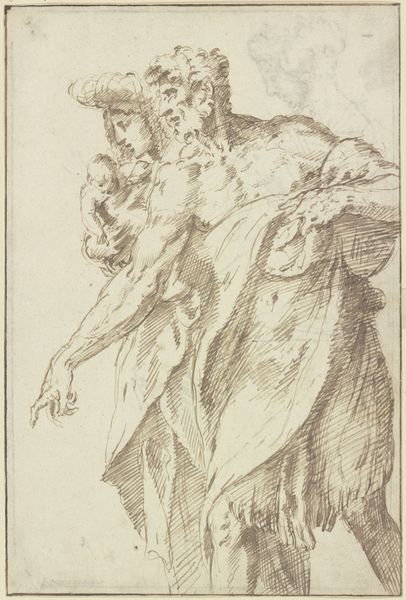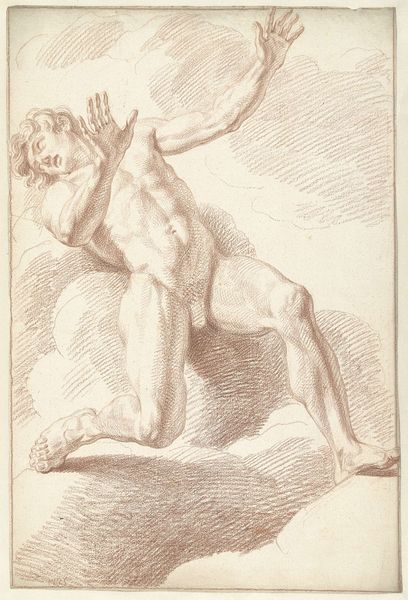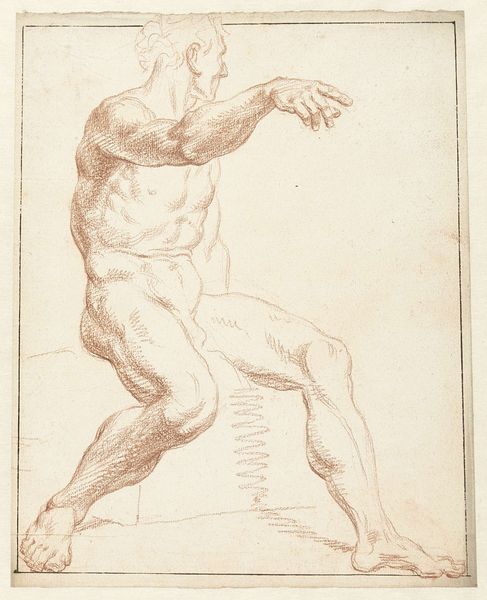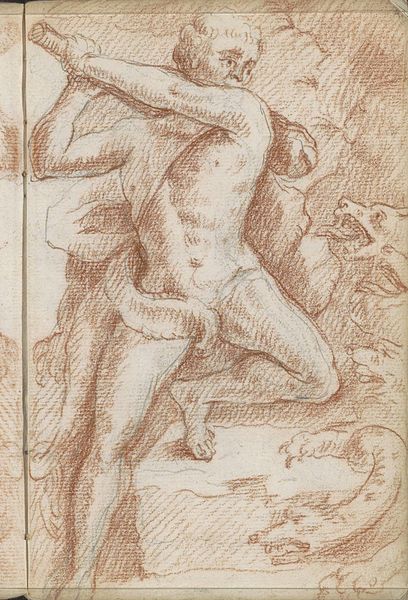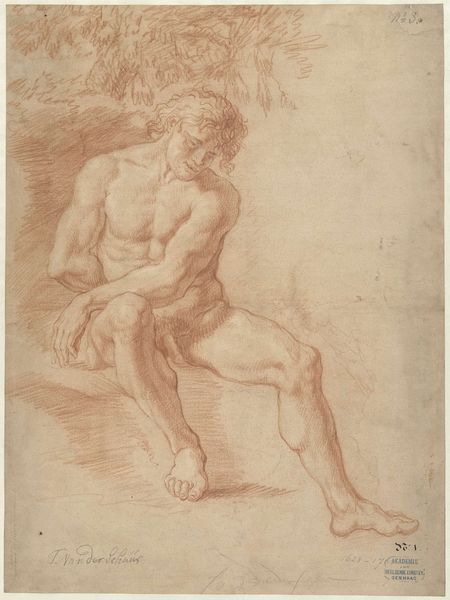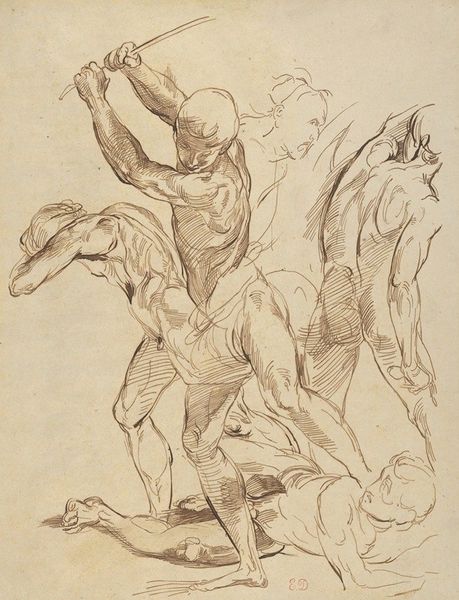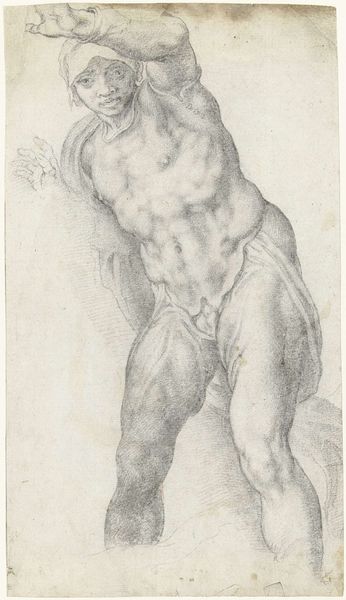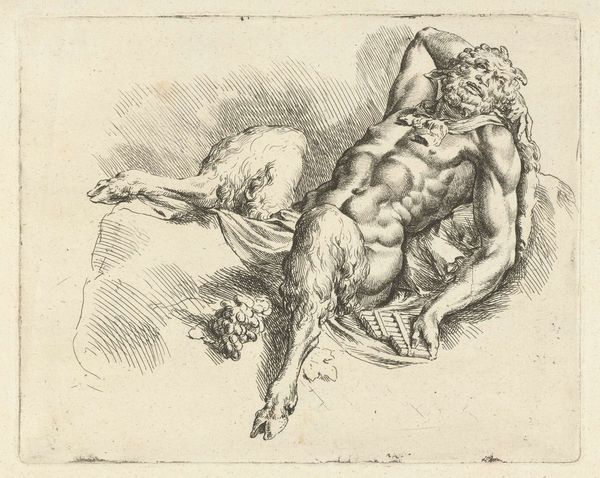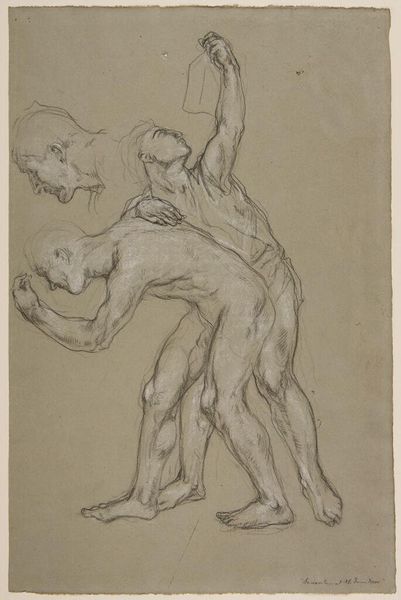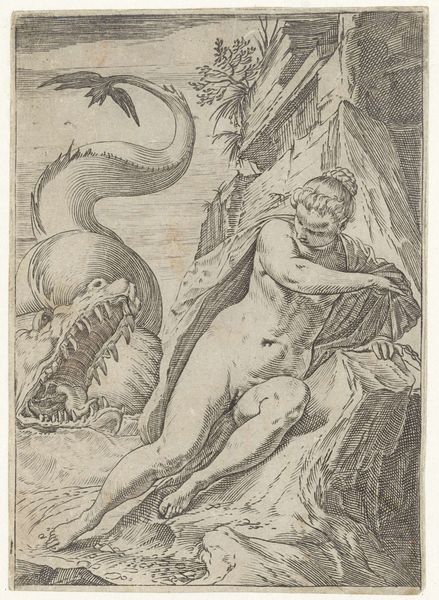
drawing, ink
#
drawing
#
ink drawing
#
baroque
#
etching
#
figuration
#
ink
#
history-painting
#
nude
Dimensions: height 287 mm, width 181 mm
Copyright: Rijks Museum: Open Domain
Curator: The piece before us, “Heilige Sebastiaan aan een boom gebonden”, attributed to A. Carracci, rendered in ink, dates from 1567 to 1618 and currently resides at the Rijksmuseum. It depicts Saint Sebastian bound to a tree, a subject laden with historical weight. Editor: The immediate impression is one of raw vulnerability. The lines are so delicate, almost tentative, yet they depict such physical anguish. It’s as if the artist is inviting us to witness something deeply private. Curator: The recurring depiction of Saint Sebastian tied to a tree is very poignant and interesting. In its time, it was a commentary on political tyranny; Sebastian was an officer in the Roman army who was persecuted for converting to Christianity, and his suffering came to represent the plight of those marginalized under unjust power. The Church employed the myth of his story for its benefit. Editor: Absolutely. Arrows as symbols also run deep – often phallic, associated with plague, certainly with intended violent puncture and deep suffering, or with divinely aimed purpose. There's a duality there—pain inflicted versus a sort of ordained destiny. I wonder about the choice to render it in ink; its inherent permanence emphasizes inevitability. Curator: The choice of ink as a medium does add weight to the scene. As a drawing it also allows the artist to focus on conveying emotional truths through form, even more so than capturing exact realistic detail. Editor: Also, I can't help but notice the composition, the contorted figure against the harsh tree emphasizes his human fragility against nature’s indomitable indifference. Curator: It is certainly true. By using an event from hagiography, this ink drawing emphasizes the suffering of the saint and transforms it into the key topic of this composition. What should this say to contemporary audiences today who engage with this composition for the first time? Editor: Perhaps the message is about finding beauty in endurance. Even when confined by history or circumstance, something in our spirits might break out and find a new life as cultural memory. Curator: Indeed. It reminds us of the roles of artists as cultural voices through eras and social-political upheaval.
Comments
No comments
Be the first to comment and join the conversation on the ultimate creative platform.
